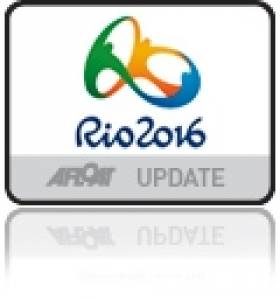Displaying items by tag: Finn Lynch
National Yacht Club Renew 'Get Finn to Rio' Campaign
The National Yacht Club has renewed its appeal for club sailor Finn Lynch who is part of a three way mens Laser dinghy trial for Irish Olympic qualification in Palma in March and Mexico in May.
The Dun Laoghaire club says it is looking to raise €25,000 to cover the final qualification trips and the purchase of a new boat for the solo star, a silver medal winner at the 2012 Youth World Championships.
Finn Lynch & Annalise Murphy Continue to Lead Olympic Laser Trial
Finn Lynch and Annalise Murphy continue to lead their respective Laser Irish Olympic Sailing Trials at the Copa de Vela Brasil in Rio this morning but Lynch has slipped back for four places after six races sailed in the overall rankings. Download full results below.
Lynch is now 36th from 48. Other Irish contestants are Fionn Lyden in 42nd and James Espey 43rd.
In the women's Radial division, Murphy stays 13th, now 15 places ahead of Howth's Aoife Hopkins.
There are four races left to sail in this, the first of three Irish Laser trials.
Murphy (13th), Lynch (32nd) Are Irish Olympic Laser Trials Leaders in Rio
National Yacht Club sailors from Dun Laoghaire lead both the mens and womens Irish Olympic Laser Trials in the early stages in Rio. Anomalies in the scoring of Ill Copa Brazil de Vela have been resolved and overall results after four races now in the women's Laser Radial class show Annalise Murphy in 13th place in the 44–boat fleet with Aoife Hopkins 28th. Best results so far are a third for Murphy in race three, Hopkins has scored 22nd in races two and three. Belgium's Evi Van Acker continues her overall lead.
Yesterday, in a confusing situation, Murphy was scored as a 'Did Not Compete' and ranked last but an overhaul of the official scoresheet has rectified this and also increased the number of competitors to 44.
Ill Copa Brazil de Vela is the first of three Olympic Laser trials for two Irish Laser Olympic places. In total this gives the trials series 32 races over six months, with four now sailed.
In the mens division, Finn Lynch is 32nd and best of three Irish in the 48–boat fleet. Fionn Lyden is 40th and James Espey, Ireland's London 2012 representative, is 44th.
Official results are downloadable below.
Lynch Appeals Again For Rio Laser Trials Support
#Rio2016 - The National Yacht Club's Finn Lynch is urgently appealing for donations to fund his trip to the upcoming Olympic trials in Rio.
With the Irish Sailing Association (ISA) citing cost reasons for its decision not to bring boats to the next trail event at next summer's Olympic sailing venue, Lynch has yet again been moved to seek the support of family, friends and Ireland's sailing community.
It comes just months after a previous appeal that enabled him to secure invaluable training with Olympic gold medallists in Croatia.
The Laser sailor will need to charter his own boat for the trials which, along with flights, food and accommodation, will put his bill at around €10,000.
The NYC has more on Lynch's latest appeal HERE.
Olympic Laser Triallist Finn Lynch Fifth in U21 Europeans
Olympic Laser triallist Finn Lynch has finished fifth overall at the Uunder 21 Laser European Championships in Murcia, Spain. Lynch, from the National Yacht Club in Dun Laoghaire counted two race wins in the ten race event to be just 12 points off the overall winner and seven points from a podium finish. Last month Lynch, a former U19 world champion, finished fourth at the U21 Worlds in Holland.
The full results are downloadable below. Kinsale Yacht Club's Darragh O'Sullivan was 38th in the 83-boat fleet.
Baltimore Sailing Club's Fionn Lyden 11th at Laser Europa Cup
#lasereuropacup – Afloat's sailor of the month for March, Fionn Lyden from West Cork was the top Irish performer at the massive qualifcation series of the Laser Europa cup Regatta at Malcesine on Lake Garda ended on Saturday with two races for the 600 competitors – claiming a record for an Olympic class event.
Baltimore Sailing Club's Lyden finished narrowly missed a top ten finish overall, placing 11th in his 100–boat Laser standard fleet. The National Yacht Club's Finn Lynch was 23rd, Daragh O'Sullivan from Kinsale Yacht Club was 27th.
In the battle for the final podium places, Alessio Spadoni ITA took the overall lead in the Laser event (100 entries) with Giovanni Coccoluto ITA in second. In the men's Radial (213 entries) Matthieu De By BEL leads from Dominik Perkovic CRO and in the women (85 entries) Silvia Zennaro ITA leads from Gintare Scheidt LTU.
Full results are here.
Ireland's Sailing Successes Celebrated In Historic Setting
#soy – Yesterday's Afloat.ie/Irish Sailing Association annual sailing awards ceremony saw a remarkable gathering of talented boat people and their supporters and friends at the Royal College of Surgeons in Ireland in Dublin to honour the Best of the Best in company with Minster for the Marine Simon Coveney. The Sailor of the Year title went to Anthony O'Leary of Cork and our all-conquering Commodore's Cup team, while the Youth Sailor of the Year is Laser Gold Medallist Finn Lynch of County Carlow, who currently sails from the National Yacht Club in Dun Laoghaire, but started his stellar sailing career with the lakeside Blessington Sailing Club up in the Wicklow Hills.
In addition, Mayo Sailing Club was chosen from upwards of 80 training centres – both clubs and commercial ventures – as the Training Centre of the Year, while the venerable Royal Cork Yacht Club, currently led by Admiral Pat Lyons, assumes the mantle of ISA/Mitsubishi Motors Sailing Club of the Year 2015 in continuation of an informal pioneering inter-club contest - dating back to 1979 - which will resume its long-established tradition of a proper handover ceremony for the coveted ship's wheel trophy in the winner's Crosshaven clubhouse as the new season gets fully under way.
Meanwhile, Afloat's W M Nixon performed as MC in yesterday's ceremony, and in doing so he was assisted by the discovery that the venue had unexpected historic links with some of the great figures in Irish sailing history, as he now explains.
The fine building of the Royal College of Surgeons in Ireland adds a bit of real class to the west side of St Stephen's Green, and it's almost exactly at the point which most of us think of as the absolute centre of Dublin, the very heart of the city where Grafton Street winds away from the Green's northwest corner.
Yesterday afternoon it became the heart of Irish sailing too, and we struck purest gold after reflecting that the only President of the RCSI of whom we had any knowledge of a strong sailing connection was Sir Thomas Myles.
Thomas Myles (1857-1937) was one of those larger-than-life characters who completely upset our perceptions of the Victorians as self-effacing and quiet people of an overly religious disposition. A Limerick Protestant who wore his faith lightly, he was a Home Rule supporter from an early age, and while studying medicine at Trinity College in Dublin he became a university boxing champion of such continuing power that at the age of thirty he went three rounds with the legendary prize fighter John L Sullivan.
Sailing was among his many sports, and as his reputation and income grew with his success as a surgeon, so too did the size of the yachts which he sailed from the Royal Irish Yacht Club on Dublin Bay. By the 1890s he was one of the most eminent surgeons in the city, and in a contest at the turn of the century he stood as firm favourite for the election to be the President of the Royal College of Surgeons in Ireland for the period 1900 to 1902.
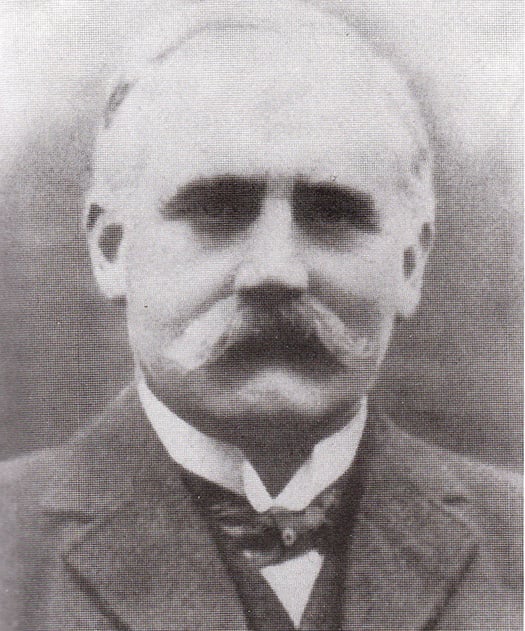
Thomas Myles around the time he was President of the Royal College of Surgeons in Ireland
But his opponent, one Dr Henry FitzGibbon, refused to accept the situation on the grounds that Myles' public involvement with the United Irish League would bring disrepute upon the college, and he went to court to argue his case that Myles shouldn't be allowed to stand for election in the first place .
Now it so happened that another keen sailing man, Walter Boyd of Howth (his son was to design the Howth 17s), was the judge who heard the case. Boyd is best known for his twelve years as a bankruptcy judge which resulted in the phrase "breaking Boyd's heart" becoming Dublinese to describe profligacy as referenced in Joyce's Ulysses. But in 1897 he had returned to more general cases, thus it was Boyd who heard the FitzGibbon/Myles case, and he threw out the plaintiff's arguments with such vigour that FitzGibbon was obliged to publish apologies and withdraw his candidature.
So when Thomas Myles became the president of the RCSI in 1900, it was an elevation which received much more than the usual attention around town. And in a style typical of the man, he set in motion the process whereby the College started to build itself the Grand Banqueting and Examination Hall, which is where the great and the good of Irish sailing were assembled yesterday.
The impressive new hall wasn't fully finished until 1904, but by that time its instigator had become Sir Thomas Myles Bt, as was the custom with retiring Presidents of the RCSI. Having seen the new building works under way, his retirement from office - though not from working as a surgeon - meant he'd more time on his hands, so he bought himself a great big ketch, the 121-ton Dorothy, which he cruised on the coasts of Europe.
But by 1910 or perhaps even earlier, he had downsized to the more workmanlike and manageable 60ft Chotah, which had been built in Brixham in Devon in the 1890s and was apparently not unlike a Brixham trawler, for the ever busy Wally McGuirk of Howth has discovered that she ended her days as an Arklow fishing boat.
The reason Wally and others are so interested in Chotah is that she is the missing link in the 1914 Howth and Kilcoole gun-runnings. We know all about the "flagship" of that event, Erskine and Molly Childers' Asgard, we know too about Conor O'Brien's ancient ketch Kelpie and have photos of her as well, and we even know a little bit about the Nugget, the McLaughlin family's boat which was the first fishing boat in Howth to be fitted with an engine.
But of the Chotah we know very little at the moment, but hope that the newfound Arklow connection will discover a photo. What is known is that when the gun-running committee sought to find a suitable vessel with auxiliary power to take over the cargo of 600 guns from Conor O'Brien's engineless Kelpie in order to land them on the beach at Kilcoole in County Wicklow, that pillar of society Sir Thomas Myles willingly agreed to bring Chotah in on the action. He and his crew took aboard the guns off St Tudwal's Island just south of Abersoch on the Welsh coast, and brought them across Channel to land at Kilcoole a few days after Asgard had made her much more high profile landing at Howth.
If you find all this insurgency activity by significant figures in Irish society a bit bewildering to comprehend in all its complexity, you ain't heard nothing yet. The Great War broke out just a few days later, and in a general mobilization Sir Thomas Myles Bt was soon appointed to being a Lieutenant Colonel in the British Army in order that he could head up a large Royal Army Medical Corps medical and surgery unit in his hospitals and in the field.
Then in November 1914 – barely three months after he had been personally involved in smuggling guns into Ireland while evading the surveillance of His Majesty's Armed Services – Sir Thomas Myles was appointed Honorary Surgeon to King George V. Yet it's said that when the 1916 Easter Rising took place, he readily found the facilities to treat any wounded rebels, and even managed to hide those on the run in the rabbit warrens of hundreds of rooms which were to be found in the great Dublin hospitals under his supervision.
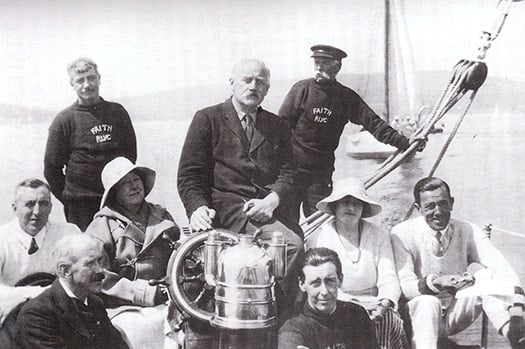
Pillar of society. Sir Thomas Myles sailing with family and friends aboard his cutter Faith in the 1920s. Photo courtesy RIYC
So if you happened to notice me looking around in some wonderment at the stately and ordered design of the Banquetting Hall in the Royal College of Surgeons yesterday afternoon while I reflected on the man who had caused this very fine room and the handsome edifice about it to be built, now maybe you'll understand why. Yet such is the complexity of Irish sailing in its myriad of forms that it's arguably all of a piece with the extraordinary lifepath of people like Sir Thomas Myles, and the ISA President's speech captured some of the problems people face in trying to administer this weird sport of ours.
The new Sailor of the Year Anthony O'Leary wasn't present for the awards as he is currently in the midst of a long-planned sailing campaign in Florida. But for the actual handover, his place was well taken by his son Robert and RORC Commodore Michael Boyd, who was co-skipper of Quokka in the successful Commodore's Cup team.
Things could have become completely surreal as the President himself, David Lovergove, wasn't at the event as his flight home from America the day before had been cancelled because of exceptionally heavy snowfalls on the US East Coast. But ISA Board Member David O'Brien of Cork of gallantly stepped up to the plate to fulfill the Presidential role, and made a fine job of delivering a speech which well encapsulates what the day was all about:
"Flag Officers, distinguished guests and fellow sailors, you are all very welcome here this afternoon. In looking out over this friendly assembly - some of whom I know very well, many of whom I know quite well, and some of whom I don't know at all but am looking forward very much to meeting – it is clearly obvious that the sailing and boating community in Ireland is one of enormous diversity.
In fact, in thinking of the sheer range and varying levels of activities afloat which we in the ISA try to represent, I am reminded of President de Gaulle's exasperated comment about the difficulties inherent in trying to govern France: "How can you administer a country" demanded the frustrated General "which has two hundred and forty-six varieties of cheese?"
Our fellow members of the Irish sailing and boating community may well think that we on the Board of the Irish Sailing Association tend to see ourselves as the big cheeses among the many varieties. Believe me, nothing could be further from the truth. Like yourselves, we could be described as the small artisan cheeses of sailing, with a strong local flavour. But it happens that it has fallen to us on the Board at this time, to undertake the task of re-shaping the Irish Sailing Association as it emerges rather bruised from the economic recession, and we need your help.
So I would ask you to be sympathetic to us in the administration of the Irish Sailing Association as we work to re-form our structures and implement our new Strategic Plan 2015-2020. It has been most encouraging the way that the Public Consultation Meetings in Dun Laoghaire, Cork and Galway in recent weeks have been so well attended, and from them we have gained very useful insights to work with you towards a productive, worthwhile and groundbreaking ISA Annual General Meeting on March 28th.
But that's another day's work. This afternoon, we are here for a celebration to honour Irish sailing and its many successes both individually and in team efforts through 2014. This function began as a thought in my mind when, during last summer, we were getting reports of fantastic results being achieved by Irish sailors and I felt that we, as the Board of the ISA, should recognize these achievements in some way. A reception was considered, then as Summer progressed and incredible achievements continued to roll in, I realized that such receptions would almost need to be held on a weekly basis.
So it was decided to wait until year end and combine the celebration of Irish sailing achievements with the presenting of the awards. Yet even that is a cause of concern. You see, in looking over the extraordinary listings for 2014, for the life of me I don't see how 2015 can even begin to match it. But as with 2014, doubtless this year will also produce some very welcome good news stories, and we look forward to the new season very much indeed, with the confidence that Ireland will continue to punch well above its weight in the world of sailing.
The structure of this afternoon's awards ceremony will help you to form a comprehensive picture of the entire Irish sailing and boating scene. Most appropriately, we will begin with the award for the ISA Training Centre of the Year, which we reckon to have been the best in 2014 from a lineup which includes an impressive 80 training facilities, run both in clubs, and as commercial ventures.
It's also worth noting that there are now 24 secondary schools in Ireland, which include sailing as a sports option in their curriculum. A while ago, I visited Schull Sailing School and was bowled over by the fact that the children in the local school select sailing as their sport of first choice, ahead of rugby, soccer, Gaelic football, hurling, hockey etc. Now that is some achievement. This is clearly a step in the right direction, and it leads us to the next part of our ceremony, the award for the ISA Youth Sailor of the Year.
Having laid the foundations, so to speak, we then move on to the announcement of the ISA/Mitsubishi Motors "Sailing Club of the Year" award. The demographics and population spread of Ireland are such that our sailing clubs play the key role in most of our sailing development, and as we had the world's first sailing club in 1720, our clubs are literally world class.
We not only invented sailing clubs, but back in 1979 we became the first sailing country in the world to have an informal "Club of the Year" competition. Since 1986, it has been sponsored by our very good friends of Irish sailing at Mitsubishi Motors.
We feel that today's national gathering is the appropriate time to announce the winner, which will be known as the Sailing Club of the Year 2015. But in time-honoured tradition, as the new season gathers pace, there will be another ceremony in the winning clubhouse for the full and final handover of the historic ship's wheel trophy, when the members can share in the successes obtained by their top competitors and administrators.
With this framework of Irish sailing clearly in place, we then conclude with the peak of achievement, the ISA/Afloat "Sailor of the Year 2014". Afloat's ownership of this award – based on Sailor of the Month winners - has a long history, going back to 1996, and it successfully highlights achievement in every area of sailing.
One month, you might get an exceptional voyage honoured, while the next month it might be a major international dinghy championship victory. The diversity is total. And just occasionally, to emphasise that we are a community, which functions afloat and ashore, the monthly award might go to someone who has given selflessly of their time for sailing administration.
The overall national award will be presented to the person who, in the judges' opinion, achieved the most notable results in, or made the most significant contribution to Irish sailing during 2014.
The boating public has had a chance to nominate their top three through an online poll, Afloat.ie got a vote too and the Sailor of the Year judges have decided the final winner.
I cannot conclude without acknowledging our sponsors. In addition to those mentioned here today – Dublin Port, Parasol and Mitsubishi Motors - I also want to thank Providence Resources for their contribution to the high performance squad. However, it is the incredible support that we receive from the Irish Sports Council that allows us to function and without whose support we would not have nearly as much to celebrate today as we have. Year after year the Sports Council continues to support sailing and behalf of Irish sailors, I thank you most sincerely".
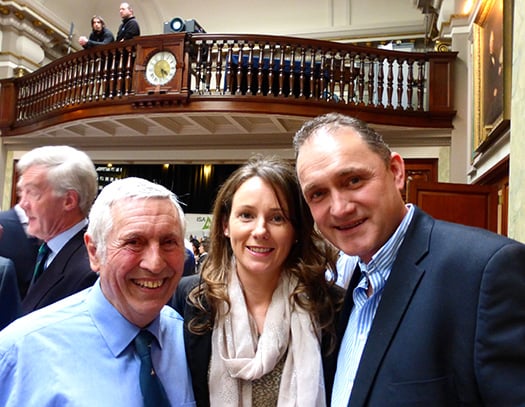
The men who raced the open ocean. At the reception in the RCSI were (left to right) Dickie Gomes (Sailor of the Month for May 2014), Caroline Coyne, and her husband Liam Coyne (Sailor of the Month for August 2014). Both Dickie and Liam have sailed short-handed Round Britain and Ireland Races with success, the former in 1982 and the latter in 2014. Liam Coyne topped the Afloat.ie online poll for 2014. Photo: W M Nixon

Josephine Keller, Aisling Keller, Ann Carroll, Nicole Hemeryck and Oisine Hemeryck
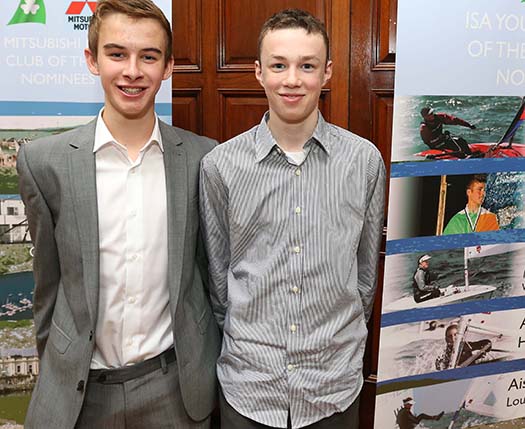
Conor Quinn and Adam D'Arcy

Pat O'Neill and Charles Seargent
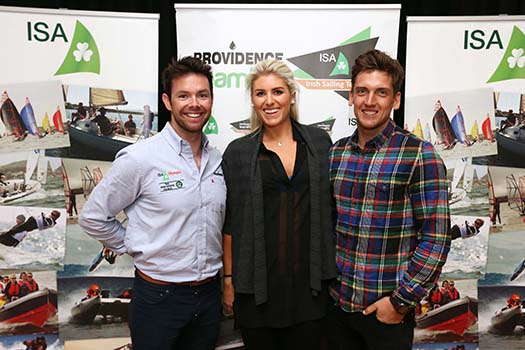
Matt McGovern, Ryan Seaton and Saskia Tidey
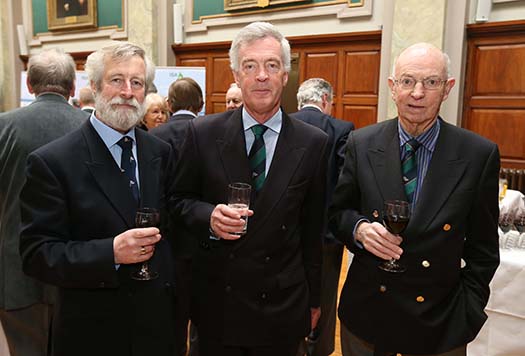
Charles Sargent, Brian Craig and Paddy O'Neill

Jack Roy, David Vinnell, and Ron Hutchieson
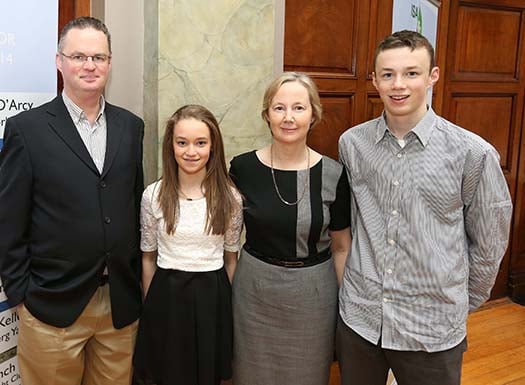
John D'Arcy, Kate D'Arcy, Imelda D'Arcy and Adam D'Arcy
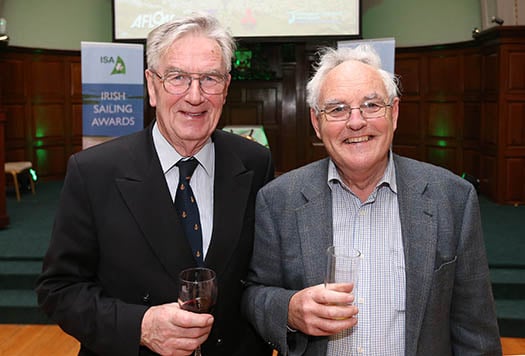
Hal Bleakley and Padraic O Brolchain

Ian Dickson, Andy Johnston, Jim Lampkin and Jane Johnston
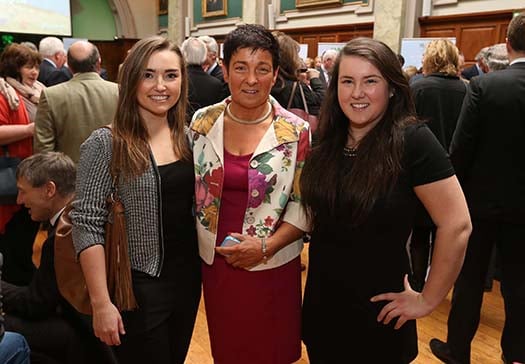
Isabella Morehead, Claire Burke and Muireann Guifoyle

Tony O'Driscoll and David Metcalfe
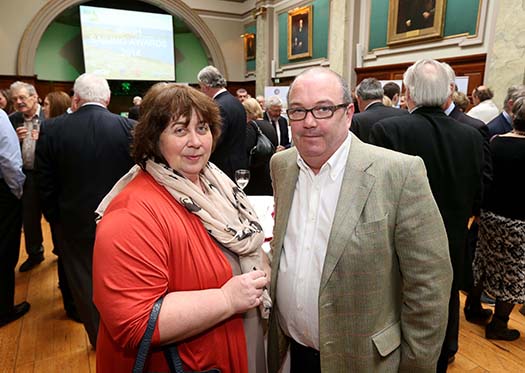
Sandra Wynne and Edwin Fay
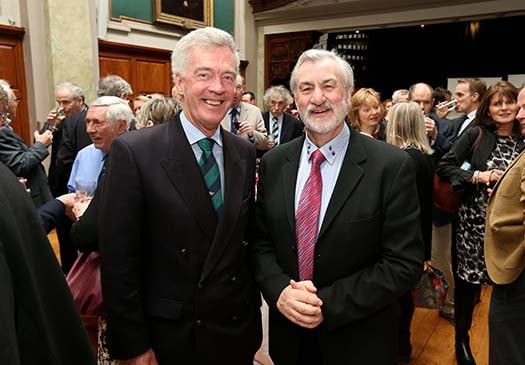
Brian Craig and Kieran Mulvey, Chairman, Irish Sports Council
Irish Olympic Laser Trial For 'Aquece Rio' Expected
#aquecerio – Ireland is expected to issue details of its selection trials shortly for The Aquece Rio – International Sailing Regatta 2015, the second of two Rio 2016 Olympic Test Events with the first being held in 2014.
Only one athlete per country can be represented with a major fight already on the cards between Finn Lynch and James Espey for the single Irish mens Laser slot.
Rio will welcome sailors once again from 13-22 August 2015 with racing taking place inside and outside of Guanabara Bay.
Each ISAF Member National Authority is entitled to enter one boat in each Olympic event and must apply to enter by 1 May 2015.
Sailors will compete in an opening series before Medal Races on 20, 21 and 22 August bring the regatta to a close.
Rio 2016 Olympic Sailing Competition
The Rio 2016 Olympic Sailing Competition will take place at the Marina da Glória, Rio de Janeiro, Brazil and will feature 380 athletes competing across ten events.
Racing is scheduled to take place from 8-18 August 2016 and the competition format for all events is fleet racing.
Annalise Drops To Seventh in Miami, Finn Lynch Makes Gold Fleet At First World Cup Regatta
#sailingworldcupmiami – Annalise Murphy sustained a drop of five places overall after a second result in the 30s took its toll on her overall score in Florida yesterday. The Dun Laoghaire Laser Radial sailor moves from second to seventh overall as Miami Olympic classes regatta enters the final day of racing this morning before tomorrrow's medal race finals.
Denmark's Anne-Marie Rindon had the lowest finishes of the top three Radial sailors today, but that didn't knock her off the top of the leaderboard. An 11-14 day means that she is now eating an 11th and discarding the 14th. Previously, a 7th was her discard. The day's results tightened things up, with second and third both in striking range.
It was a sun bathed day at ISAF Sailing World Cup Miami with the previous cool northern breeze from the replaced with a shifty, yet warmer, easterly that tested the sailors once again.
Evi Van Acker of Belgium is only five points back. Marit Bouwmeester is only two points behind that. This sets up some interesting running-math problems for the Medals Race on Saturday.
The hard-luck story of the day was Annalise Murphy, who was part of this conversation until she picked up a keeper 35th in race eight. "It was hard to know where you had to be," she said, and left it at that.
Meanwhile, in the mens Laser class, the National Yacht Club's Finn Lynch who leads Irish interest having made the Gold fleet at the first attempt has given an appraisal of his own debut performance in Miami: 'Super happy about making Gold fleet in my first World Cup! I found out today that it is a huuge step up from what I'm used to. Not so happy with my sailling today [53rd from 55] but hopefully tomorrow I can make up for it!
The young Dubliner leads Belfast's James Espey by two places with the two Irish Rio rivals currently placed 42nd and 44th respectively in the 55–boat gold fleet.
Britain's Nick Thompson, who says that his favorite boat is the foiling Moth, is doing nicely here in a Laser, in contact with the surface of the water. The former youth world champion leads the 106-boat fleet with an eight-point margin going into the final day of racing ahead of Saturday's double points Medal Race. In second place, Philipp Buhl of Germany has burned his throw-out race on a 34th, so he has more to lose than Thompson (a 12th to throw out) if the wheels fall off on Friday. Behind them are serious threats still within range, depending, and it remains a difficult racecourse.
Young Andy ("Pain is temporary; glory is forever") Maloney of New Zealand has had his moments of late. He won the Palma version of this event in 2013, and in 2012 was second at Hyeres. As race day five beckons, he is seventh in the standings and found Thursday's conditions not quite as challenging as the races on Wednesday. "They moved the Thursday start into the morning," he said. "By comparison it seems to get a lot more patchy in the afternoon, as things heat up."
The second race of the day was ripe to be abandoned, and it was. "Between races, we were seeing 40 degree shifts with pressure drops to 5 knots," Maloney said, "and then pressure building to 15 knots and back to 5. They got a start off, and a massive lefty came down with heaps of pressure. It was a lay to the weather mark, so that race was abandoned, and we waited around for a bit. I think they were hoping it would stabilize, but finally they set up at an average angle and got on with it. There were lots of little shifts, but the thing was to be sure you were in phase with the big ones. When it's that tricky, nobody can get everything right."
Maloney won a race on Monday. Today he went 7-11.
Annalise Stays Second After Shifty Day At Sailing World Cup Miami
#SailingWCMiami – A third in race five yesterday at the Miami Olympic classes regatta kept Ireland's Annalise Murphy hopes of overall victory this Saturday very much alive. The Dun Laoghaire sailor, who finished fourth in the London Olympics, is in second overall but a 36 in race six spoiled an otherwise very consistent scoresheet (2 2 5 3 3 (36) in a world class fleet.
The American regatta signals the intense build–up for Rio, an event for which Annalise Murphy has already qualified Ireland.
599 boats and 768 sailors who were adjusting sail settings all day given the blustery conditons. If it wasn't the wind direction that was changing, it was the wind speed which made it all the more notable that three classes produced back-to-back race winners.
'I wasn't so hot with a 36th' Murphy admitted last night but she was not alone with an erratic result as the Biscayne Bay winds proved volatile. Behind the National Yacht Club sailor is silver and bronze medallists from London 2012, Belgian Evi Van Acker and Dutch number one Marit Boumeeester. However the star of the week so far is, Denmark's Anne-Marie Rindom, 13th in London 2012, who counts a score of 3 5 1 1 1 (7) to stay four points clear of Annalise.
Ireland's Eric Ruigrok lies 75th scoring 35th in race five in the 79–boat fleet.
In the mens Laser class Rio prospect Finn Lynch, also of the National Yacht Club, continues to hold a significant margin over his 2016 rivals, James Espey and Darragh O'Sullivan. Lynch, the under–19 World Champion, is ten points clear of London 2012 rep James Espey in 43rd place.
In the 49er skiff duo Ryan Seaton and Matt McGovern lie 35 from 58 and in the women's 49erfx, Dun Laoghaire trialists Andrea Brewster and Saskia Tidey lie 18th from 40.
Dave Ullman, among many things the 1996 US Rolex Yachtsman of the Year and a three-time 470 world champion, is now coaching U.S. Olympic hopefuls. He was a keen observer of the day's events. The direction shifts, he said, were coming at "15 to 20 degrees, but more than that it was about velocity-on and velocity-off. Downwind, if you were in the velocity, you could make big gains.
"It was much windier today than the forecast called for," Ullman said, "but the racecourse is fine. The race officials are doing a good job with some challenging circumstances.
"But, it was cold out there."
He wasn't the only one who said so.
Wednesday was the third of six days of racing for ten Olympic classes. Top qualifiers will sail a Medal Race on Saturday. Competitors in three Paralympic classes will conclude their racing on Friday.
Men's 470
A second win in six races settled Luke Patience and Elliot Willis of Great Britain into a six-point lead in their 44-boat fleet, and they had reason to be glad that race six went as long as it did, and ended when it did. They had boats to pass. And then it was over. Second-place skipper Mat Belcher of Australia observed that Patience and Willis had a good second weather leg, "They went heavily to the right, and that got them around a lot of boats."
With four more races scheduled before Saturday's Medals Race, Patience and Willis have scores of 1-2-(5)-4-3-1 to a count of 5-1-2-(12)-2-7 for Belcher and crew Will Ryan. The six-point delta allows for discarding worst scores. Panagiotis Mantis and Pavlos Kagialis dropped out of their leadership position (two firsts on Tuesday) and now are looking at (25)-4-1-1-8-10 for third place.
Farther down in the lists, Matthias Schmid's Austrian crewman, Florian Reichsteaedter, like everyone out there in a 470, spent his day balancing on the wire, adjusting in and out with the puffs. "There was no system to it" he said. "Sometimes you had to be on the left. Sometimes you had to be on the right. And it was up and down, up and down all day. Eight knots. Eighteen knots.
"And it was cold out there."
His handshake proved that.
And we may have already mentioned that. But, to be fair, it was Miami-on-the-water cold. Readers in northern climes, please hold those cards and letters.
Women's 470
The London 2012 gold medalists Jo Aleh and Polly Powrie, aka Team Jolly, tightened their grip on the lead in the Women's 470 with a pair of firsts, demonstrating that, yes, there must be an answer to the dilemma of a dicey racecourse. "We're sort of getting used to the wind being up and down and shifty," Aleh said.
She offered, "If you can't pick the right place to be on the racecourse, try to not pick the wrong place. We didn't always have the best start or the best first leg, but we would keep chipping away and chipping away until we could look around and say, Oh, we're in front. We'll take it."
Team Jolly, sailing out of Auckland, New Zealand, has placings of 2-2-1-(7)-1-1. The London 2012 silver medalists, Hannah Mills and Saskia Clark of Great Britain, are nine points back at 6-1-(7)-1-3-5.
Sophie Weguelin and Eilidh McIntire, also of Great Britain, are in third, another ten points back.
49er
Diego Botin and Iago Lopez's (ESP) overnight 14 point lead was shattered by a culmination of bad results and tight performances from their rivals.
John Pink and Stuart Bithell (GBR) and Joel Turner and Iain Jensen (AUS) kept things together, remaining at the front of the pack and now share the lead on 42 points. But for Botin and Lopez, a U flag penalty, a tenth and an 18th allowed the British and Australian teams to advance, leaving them one point behind.
Last to arrive back on-shore, last to take their sails down and last out of the boat park, Botin and Lopez looked deflated on the slipway. After their bright start they received a thorough debrief from their coach upon conclusion of the third day. All is not lost. They remain in contention; teachings will be applied and tomorrow is another day.
For Turner and Jensen, their short term partnership, is a one off for Miami with Jensen's usual helm Nathan Outteridge missing out for personal reasons.
"It's the first time I've sailed the 49er without Nathan for a long time," said Jensen. "Joel's doing great and he's picking some clever shifts out there and we're doing a lot better than we expected considering we only had three days in the boat together before this."
Routine, rhythm and reliability are three buzz words for Outteridge and Jensen. The pair sailed together as teenagers, winning the ISAF Youth Worlds, and a partnership in the 49er was inevitable.
Seven years after forming, three 49er world titles and an Olympic gold medal later, Miami is the first time Jensen has been without his formidable helm in the Men's Skiff, "If you sail with someone for years, like I have with Nathan, you get stuck in your routine. It's always the same but if you sail with someone else it forces you to problem solve differently and that's beneficial for when you go back with the other person.
"The roles are still the same with Joel as with Nathan. There are subtleties with the way he [Turner] sails and the way Nathan steers and approaches things. Neither is right or wrong, it's just the individual style."
Whilst the partnership is flourishing in Miami, when teased with the question - reckon you'll stick with Turner? - Jensen replied, "Joel's doing an awesome job and I think he'll be a force in the 49er for years to come, he's 19-years-old and got a bright future but in the next couple of years I might just stick with what I know."
Outteridge will be flying in on Thursday, ensuring his crew sticks to what he knows and to enjoy the Miami racing from the coach boat.
49erFX
When those around you all discard 41 points from a DNF or a DNC, the odds will always be stacked in your favour. That's the case for Alex Maloney and Molly Meech (NZL) who have opened up a 25 point lead in the 49erFX.
The Kiwis were just one of eight teams to complete the single race on the first day and they are reaping the rewards. Their discard is a 21 and they hold a comfortable advantage after nine races.
Martine Grael and Kahena Kunze (BRA) are second overall on 62 points whilst Nina Keijzer and Claire Blom (NED) sit third on 90 points.
Maloney and Meech certainly won't be resting on their laurels with six fleet races and Saturday's Medal Race ahead of them but things are certainly going their way.
Women's RS:X
Two wins and a second is a perfect day for some but not for 2014 ISAF Sailing World Cup Final gold medallist Bryony Shaw (GBR).
On the face of it, the Briton dominated the day but in her words, "It's strange, it didn't feel like a perfect day out there. I made a lot of mistakes actually. It was really shifty and puffy and I think it was my awareness, especially on the downwinds that really pulled me through.
"I made a couple of silly calls by going a bit too extreme at the start so I had to make some pretty big comebacks today."
Shaw, the defending champion, is firmly in control. She is 17 points clear of the second placed Olga Maslivets (RUS) and is carrying a superb 2014 conclusion forward into the New Year, "I feel like this [leading in Miami] is momentum from winning in Abu Dhabi at the end of last year and the event we had in Rio. It's nice to come out here and put on a good show.
"I really feel like 2015 is my year and it's important for performance. I want to try and be selected for the games and win a medal in Rio, so I need to be performing at that level now."
Men's RS:X
Consistency was at a premium for the first day of gold fleet racing in what was an up and down day for all.
Only the second placed Nick Dempsey (GBR) put together a trio of top ten finishes, 8-8-3, whilst those around him finished out of the top ten at least once.
It's still France atop of the leader board, but with a new face lighting the path ahead. Overnight leader Louis Giard (FRA) has dropped to fourth whilst Thomas Goyard (FRA) claimed a 12-4-2 which is enough for a slender one point lead over Dempsey.
Dorian Van Rijsselberge (NED) took out the first bullet of the day and is third overall. The remaining victories went the way of Byron Kokkalanis (GRE) who is in seventh and the 14th placed Mattia Camboni (ITA).
Laser
If others demonstrated that it is possible to win two race back-to-back on a wacky race course, five-time Olympic medalist Robert Scheidt of Brazil demonstrated that the best can stumble. He won his first race of the day, then burned his throw-out race on a 27th.
Scheidt's closest competition, Australian Matthew Wearn, went with him and burned his throw-out on a 20th.
Neither of the two leaders can afford another bad race. Scheidt has a seven-point cushion over Wearn, but Germany's Philipp Buhl is only one point behind Wearn, and only four points separate him from Julio Alsogaray of Argentina and Nick Thompson of Great Britain.
At 106 boats in two divisions, the Laser is by far the largest class here and as hard as any when it comes to getting to the top. A few years ago, American Jensen Mctigh was acing it in the Snipe class. Here he's paying his dues ("I'm probably the youngest person here") with three-digit standings, but he's seeing the racecourse as clearly as anyone. McTigh's take from his end of the Laser fleet, "The shifts were bigger yesterday, but those blew evenly across the course. Today the shifts were smaller, but they never stopped. They never stopped."
Finn
It was Ioannis Mitakis day in the Finn fleet on Biscayne Bay today.
Mitakis, who represented Greece in the 2012 Olympic Games and won the European Finn Championship the same year-leading the Medal Race start to finish-today took back-to-back firsts. Fleet leader Giles Scott of Great Britain faded.
Faded, but not far enough to cost Scott the lead that he hopes will keep an 18-month winning streak intact.
With a worst score of sixth to discard, Scott now has finishes of 1-1-1-5-4-(6). Computing throw-out races, he has a five-point lead over Jake Lilley of Australia and a 12-point lead over Mitakis. Anything can happen, but Lilley is carrying a 22nd as his discard. Another bad race would probably sink him below the podium. It's game faces all around.
Nacra 17
It's a high scoring affair in the Nacra 17 with consistency a rarity in a highly competitive fleet.
Defending Miami champions Vittorio Bissaro and Silvia Sicouri (ITA) and Ben Saxton and Nicola Groves (GBR) share the lead on 50 points. The teams recorded two scores outside the top ten with one top ten finish.
Anything can happen in the 49-boat fleet and early front runners Gemma Jones and Jason Saunders (NZL) fell victim to a 29-14-28 day that sees them drop to seventh. Not helped by a late night disqualification after a jury hearing the pair count all three scores and are 36 points off the top. But as shown, anything can happen.
Paralympic Events
There's a tussle at the top in the 2.4mR between Megan Pascoe (GBR), Helena Lucas (GBR) and Bjornar Erikstad (NOR) with one point of separation. An intriguing two days is ahead with four more races to decide the winner.
Dan Fitzgibbon and Liesl Tesch (AUS) are on track to make it two ISAF Sailing World Cup Regatta wins in a row with a two point lead over Marco Gualandris and Marta Zanetti (ITA) in the SKUD18. Defending champions Alexandra Rickham and Niki Birrell (GBR) complete the podium after six races.
In the Sonar, Alphonsus Doerr, Brad Kendell and Hugh Freund (USA) and John Robertson, Hannah Stodel and Steve Thomas (GBR) are tied atop on 11 points.































